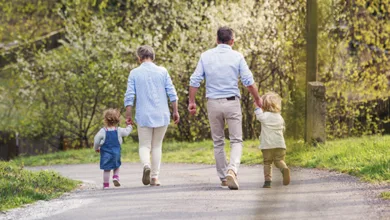
While not a true Trekkie, I have watched more episodes and movies based on the Star Trek universe than the average TV viewer.
One episode that always fascinated me back in the ’60s featured a starship captain who had suffered a devastating accident that left him with locked-in syndrome. He was unable to move or communicate other than answering yes or no questions and driving his wheelchair with the aid of a device operated by his brainwaves. Of course, that was science fiction and not the first time brain-controlled interfaces (BCIs) were part of the story.
In 1818, Mary Shelley’s Dr. Frankenstein used a disembodied brain to control another body. In the 1920s, Edmond Hamilton’s short stories featured an artificial brain that mimicked a biological brain, an artificial retina that transmitted electrical pulses to allow an individual to see, and a brain suspended in a solution to keep it alive while it controlled the movements of a metal robot via wire.
Today, scientists are closing the gap between man and machine every day. Subjects are connected to devices through something as simple as a cap threaded with hundreds of sensors to implants surgically placed directly into the brain. These interfaces read the electrical signals generated by the brain, decipher the user’s intentions, and translate them into physical actions.
Areas where BCIs are making headway:
Communication
BCIs allow users to communicate through text or speech synthesis. Systems have vocabularies between 50 and 125,000 words and generate speech up to 62 words per minute.
A 36-year-old German man in a completely locked-in state learned to alter his brain activity to compose simple messages. He was soon able to ask for specific beverages, music, and ask his young son if he would like to watch a movie with him.
Mobility
BCIs enable individuals to control wheelchairs and assistive devices using their thoughts.
Those who are disabled regain a sense of autonomy, moving independently and interacting with their environment.
Scientists at the University of Padova in Italy have proven the proficiency of such systems by using a completely non-invasive brain-machine interface technology.
Fully paralyzed people navigate a wheelchair through a challenging obstacle course using their minds and wearing a cap that decodes their brain waves.
Improving Prosthetic Integration
BCIs create more intuitive and responsive prosthetics. By connecting the brain directly to the prosthetic, users can execute natural movements that simulate those of a biological limb.
This process improves functionality and reduces the user’s feeling of detachment from the artificial limb.
Restoring Sensory Perception
BCI technologies are in development that allow not only blind individuals to see but also people who are hard of hearing to hear.
Even the sense of touch is being studied.
Battelle Corporation created a BCI system that picks up the faintest nerve fiber signals that a person with a spinal cord injury cannot feel in one area, amplifies those signals, and rebroadcasts them to an area of the body where some sensitivity is still experienced. In one system exercise, the person could identify whether they were holding something and the type of object they were holding 50 percent more of the time with the system than without it.
BCIs have become effective tools for cognitive rehabilitation and neurorehabilitation. Monitoring neural activity enables therapists to tailor rehabilitation programs according to each patient’s unique needs and then use interfaces in brain training exercises, memory enhancement, and cognitive assessment tasks that stimulate neural pathways. As a result, recovery periods are shorter, resulting in patients experiencing better outcomes.
Like many other technological advancements, BCIs find their roots in pop culture’s science fiction realm and have allowed these systems to, as another starship captain once said, “boldly go where no man has gone before.”





